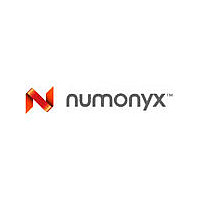NAND256W3A2BN6F NUMONYX, NAND256W3A2BN6F Datasheet - Page 14

NAND256W3A2BN6F
Manufacturer Part Number
NAND256W3A2BN6F
Description
Manufacturer
NUMONYX
Datasheet
1.NAND256W3A2BN6F.pdf
(59 pages)
Specifications of NAND256W3A2BN6F
Cell Type
NAND
Density
256Mb
Access Time (max)
12us
Interface Type
Parallel
Boot Type
Not Required
Address Bus
25b
Operating Supply Voltage (typ)
3/3.3V
Operating Temp Range
-40C to 85C
Package Type
TSOP
Sync/async
Asynchronous
Operating Temperature Classification
Industrial
Operating Supply Voltage (min)
2.7V
Operating Supply Voltage (max)
3.6V
Word Size
8b
Number Of Words
32M
Supply Current
20mA
Mounting
Surface Mount
Pin Count
48
Lead Free Status / RoHS Status
Compliant
Available stocks
Company
Part Number
Manufacturer
Quantity
Price
Company:
Part Number:
NAND256W3A2BN6F
Manufacturer:
ST
Quantity:
4 000
Part Number:
NAND256W3A2BN6F
Manufacturer:
ST
Quantity:
20 000
Memory array organization
2
2.1
14/59
Memory array organization
The memory array comprises NAND structures where 16 cells are connected in series.
The memory array is organized in blocks where each block contains 32 pages. The array is
split into two areas, the main area and the spare area. The main area of the array stores
data, whereas the spare area is typically used to store error correction codes, software flags
or bad block identification.
In x8 devices the pages are split into a main area with two half pages of 256 bytes each and
a spare area of 16 bytes. In the x16 devices the pages are split into a 256-word main area
and an 8-word spare area. Refer to
Bad blocks
The NAND flash 528-byte/264-word page devices may contain bad blocks, that is blocks
that contain one or more invalid bits whose reliability is not guaranteed. Additional bad
blocks may develop during the lifetime of the device.
The bad block information is written prior to shipping (refer to
more details).
Table 4
include both the bad blocks that are present when the device is shipped and the bad blocks
that could develop later on.
These blocks need to be managed using bad blocks management, block replacement or
error correction codes (refer to
Table 4.
shows the minimum number of valid blocks in each device. The values shown
Density of device
Valid blocks
256 Mbits
128 Mbits
Section 7: Software
Figure 7: Memory array
Minimum
2008
1004
algorithms).
organization.
Section 2.1: Bad blocks
NAND128-A, NAND256-A
Maximum
2048
1024
for












